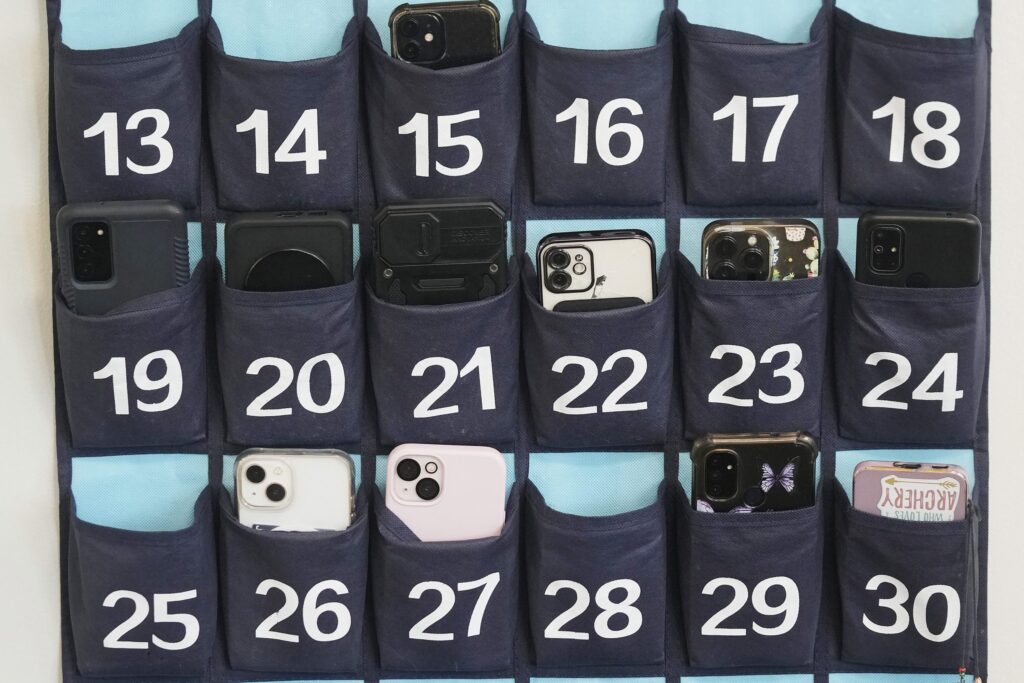An ominous cloud continues to hang over the debate about teen mental health and the role of technology, as sociologist Jonathan Haidt's bestselling book, “The Anxious Generation,” warned this spring. Some parents and educators are calling for schools to ban smartphones and laptops. Others are trying to stave off panic, pointing to research that calls for a longer-term view.
People feel boxed into dichotomous camps of “ban the technology” and “don't ban the technology.”
But there is a way to reset the conversation so that parents, educators, and kids themselves can make better choices about technology. As writers and researchers focused on the science of learning, we see big holes in the debate so far. The problem is that decision makers continue to rely solely on two sets of questions and data: one set focuses on questions about how young people feel (not very good); the other set focuses on how kids are spending their time (they're spending hours on their phones).
A third question is missing, and needs to be asked: What are children and young people learning, and how? Is technology helping or hindering their learning? Think of data on technology and learning as the third pillar of this discussion. Without it, we won't be able to find a way to strike a balance.
Haidt's book focuses primarily on well-being, and it's great that it acknowledges research that shows that play and offline exploration are important for children's mental health. But play and exploration are also essential for learning, and parents and educators need more examples of the different places where learning happens: on-screen, off-screen, or a hybrid of both. If parents don't stop to consider whether technology is giving today's children the opportunity to explore and expand their thinking, they risk being too protective or too permissive.
Related: Be a lifelong learner. Subscribe to our free weekly newsletter and receive comprehensive reporting directly to your inbox.
Harvard professor Michael Rich, author of the recently published “Mediatrician's Guide,” argues that children are growing up in a world where they have a vast array of experiences and learning opportunities at their fingertips, moving seamlessly between physical and digital information. This is their reality. Today, even children from low-resource backgrounds can virtually visit places that were out of reach in the past.
Many parents and teachers know that children can gain valuable skills and knowledge by using different technologies and media. In fact, they already take learning potential into account when making decisions about technology. They limit the use of mobile phones and laptops in certain situations and allow their use in others, depending on how they believe they can provide a good learning environment for children of different ages and stages.
Sometimes technology and how we use it to explore and create is an essential part of what kids need to learn. For example, this year students worked with University of Washington professor Jason Yip at a Seattle public library to create tools and games to help other kids identify and avoid misinformation. One game was an online maze set in the world of Minecraft, where kids could experience what it would feel like to fall into a pit of extreme information. “Digital play can open up a lot of possibilities for kids to experience unknown and challenging situations, such as misinformation, and experiment with decision-making,” Yip said.
RELATED: Gardening, horses and a 'chill room': One neighborhood goes all-in on mental health support
There needs to be more focus on the impact of technology on learning, both positive and negative, at all ages. Studies of young children have shown that parents who are distracted by their phones are less able to help their children develop language skills important for learning to read. Parents may need to model different behaviors around cell phone use. And in a study conducted at the University of Delaware, researchers read to 4-year-olds live, via video chat, or via recorded video. There was no significant difference in learning between children who were read to live and those who were read to via video chat. This study and others provide clear evidence that children learn when they are read to picture books online.
Instead of fighting with kids about their smartphone use, we need to make sure there are enough teachers and mentors to help all kids use smartphones and laptops to support their learning, whether that be by collaborating on a science fair project or creating a video book trailer for YouTube. Kids need teachers and parents who give them opportunities to explore, play, and tackle challenges in both the digital and real worlds.
Our society is good at creating polarization, but today we don't need to fall into the extreme positions of “ban” or “don't ban” smartphones, laptops, and other technology.
Parents and teachers should make decisions about technology after considering the issue from three perspectives: how much kids are using the devices, how the devices are affecting kids’ well-being, and, what’s missing, how the devices are affecting kids’ learning. Perhaps adding this new element can help adults understand that we’re not just a “generation of anxiety,” but also a generation of eager learners.
Cathy Hirsch-Pasek, Roberta Golinkoff, and Lisa Guernsey are the authors of several books on children's learning and founders of Learning Science Exchange, a New America fellowship program and problem-solving platform that brings together experts in child development research, media and journalism, entertainment, social entrepreneurship, and educational leadership.
This article about teens and technology was produced by The Hechinger Report, a nonprofit, independent news organization focused on education inequality and innovation. Sign up for the Hechinger newsletter.
Related article
The Hechinger Report provides in-depth, fact-based, unbiased reporting on education free to all readers. But that doesn't mean we're free to produce it. Our job is to inform educators and the public about pressing issues in schools and campuses across the country. We say everything, even the uncomfortable details. Help us continue this work.
Join us now!



